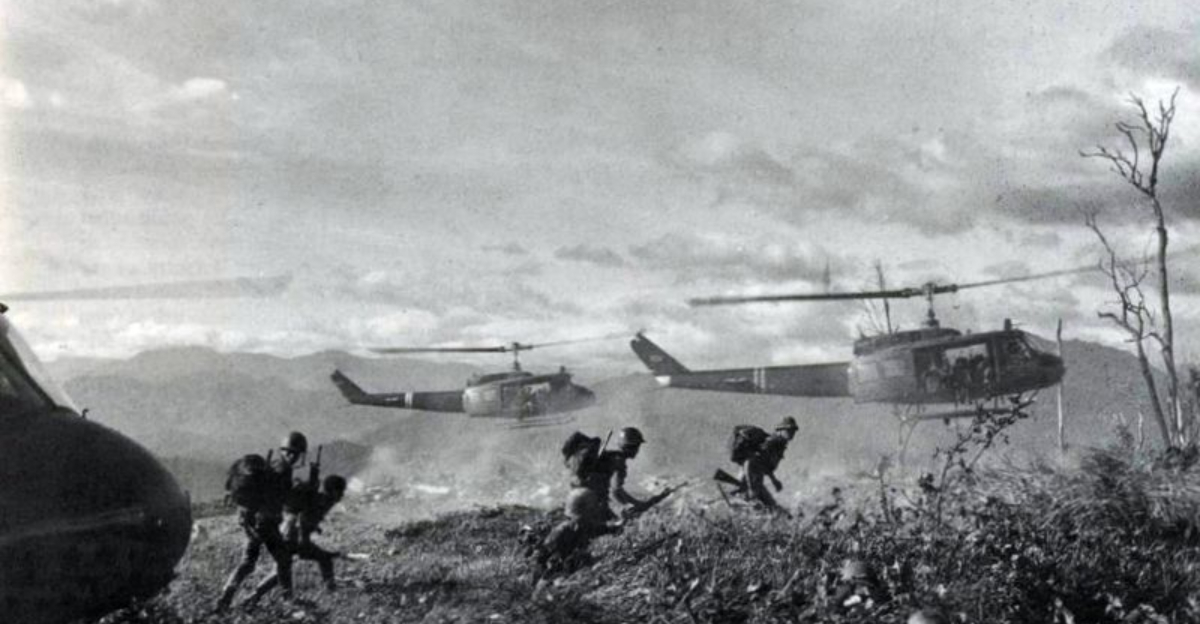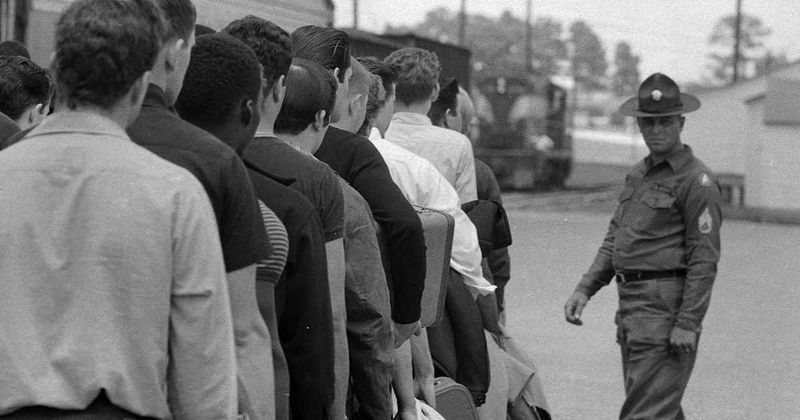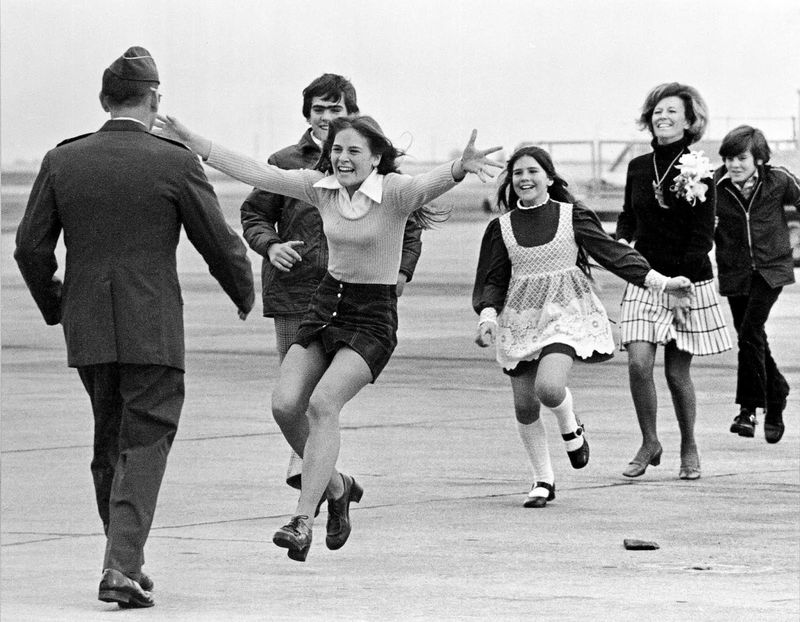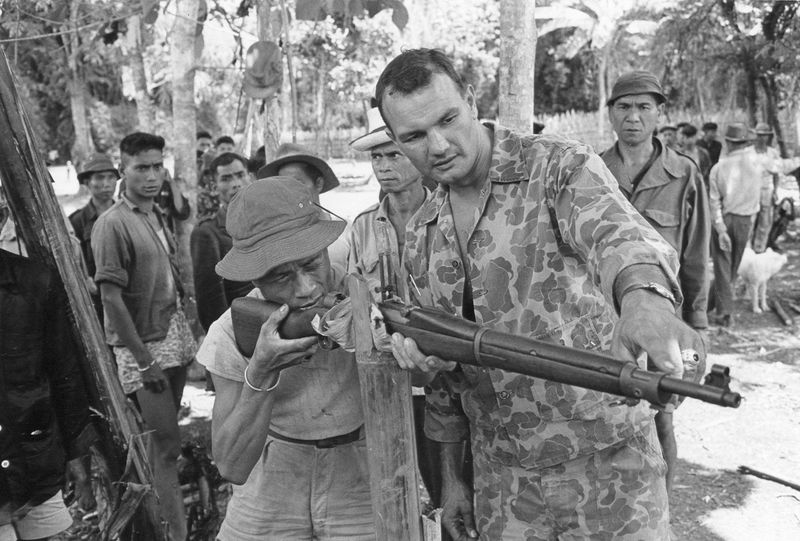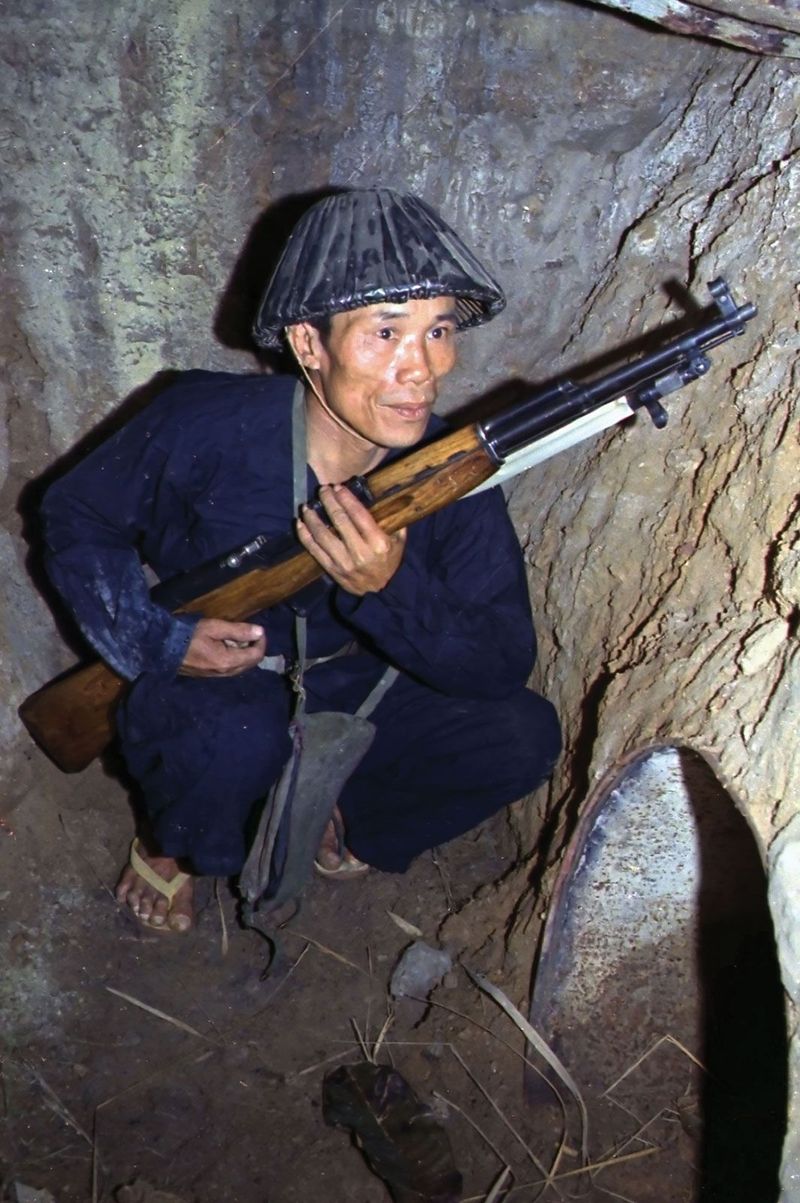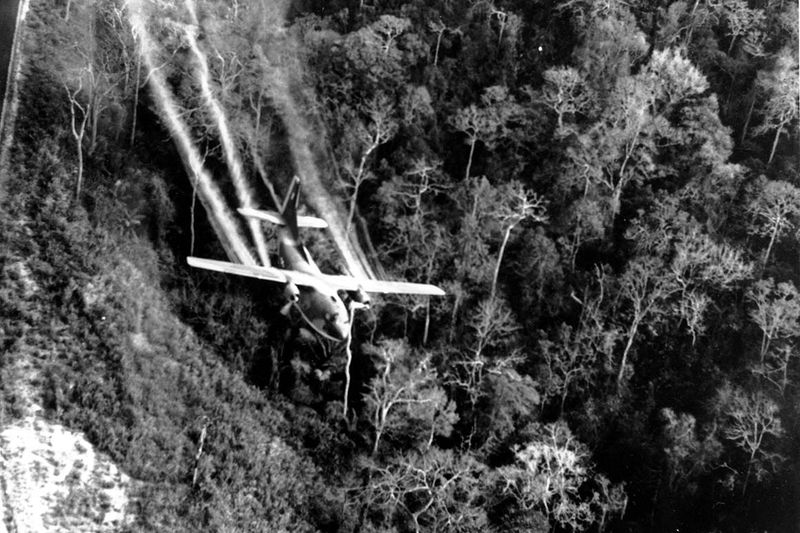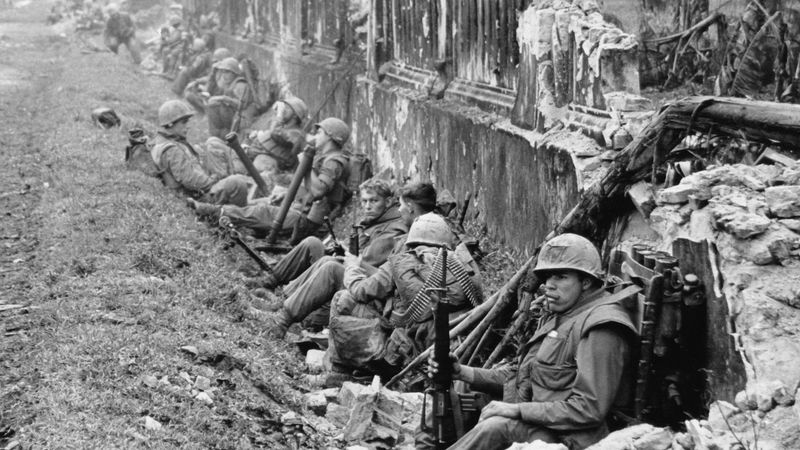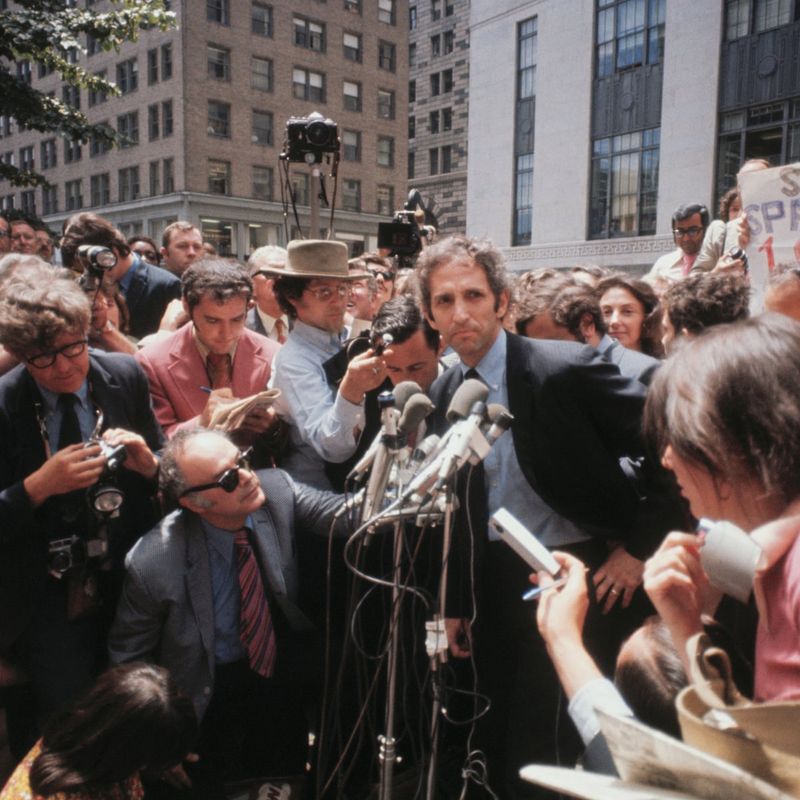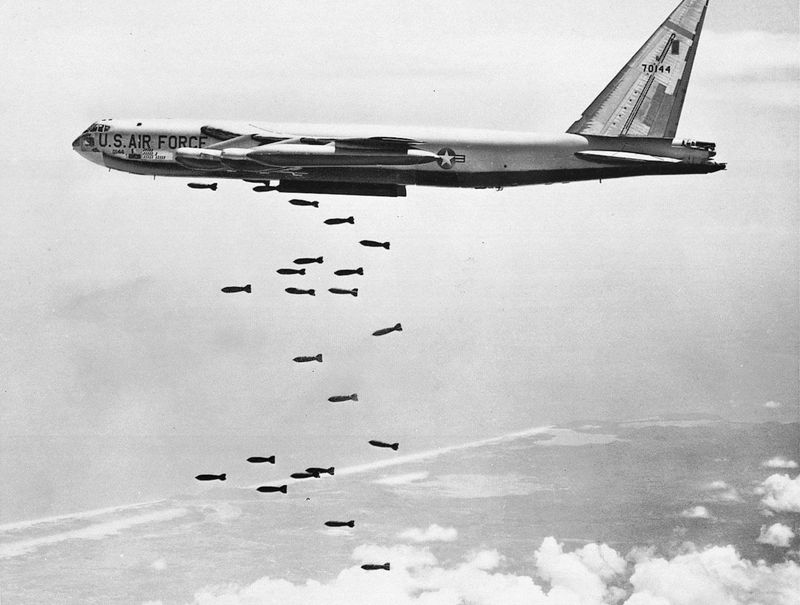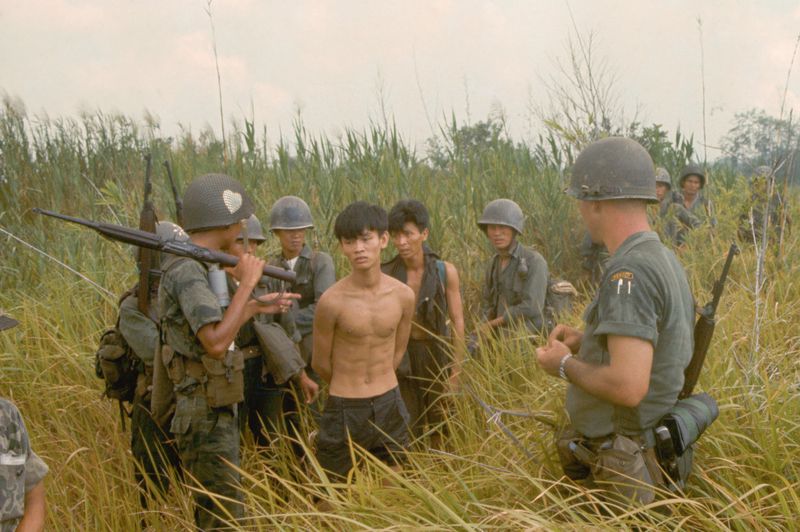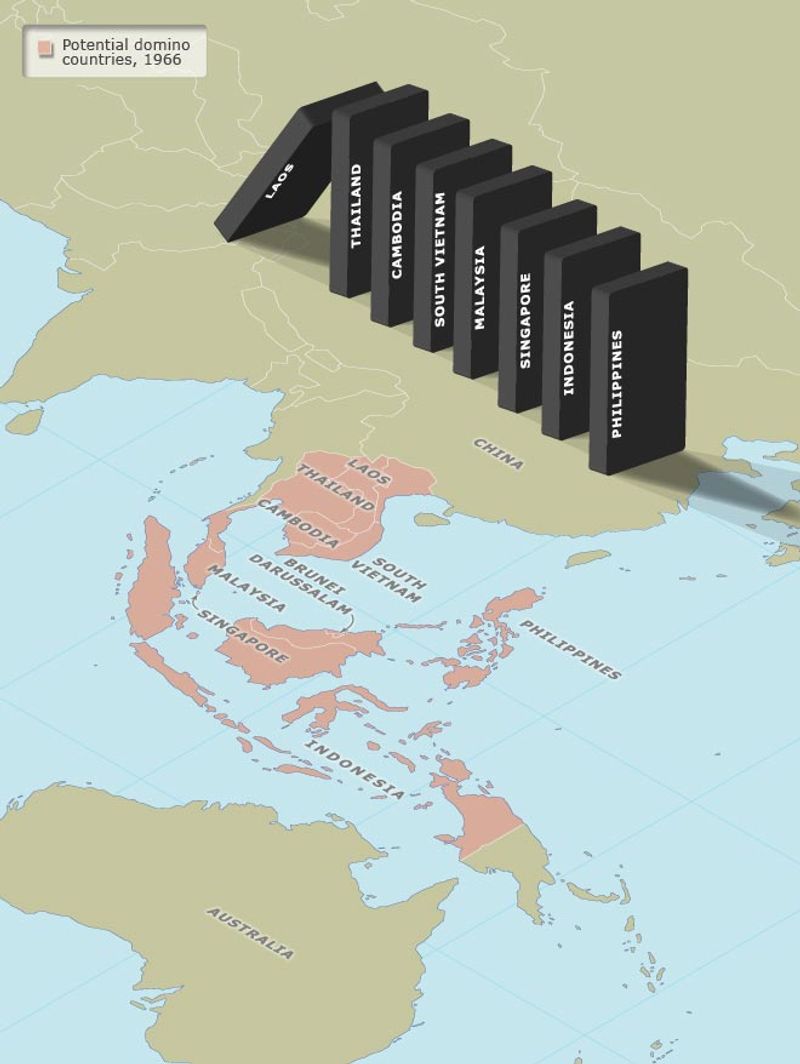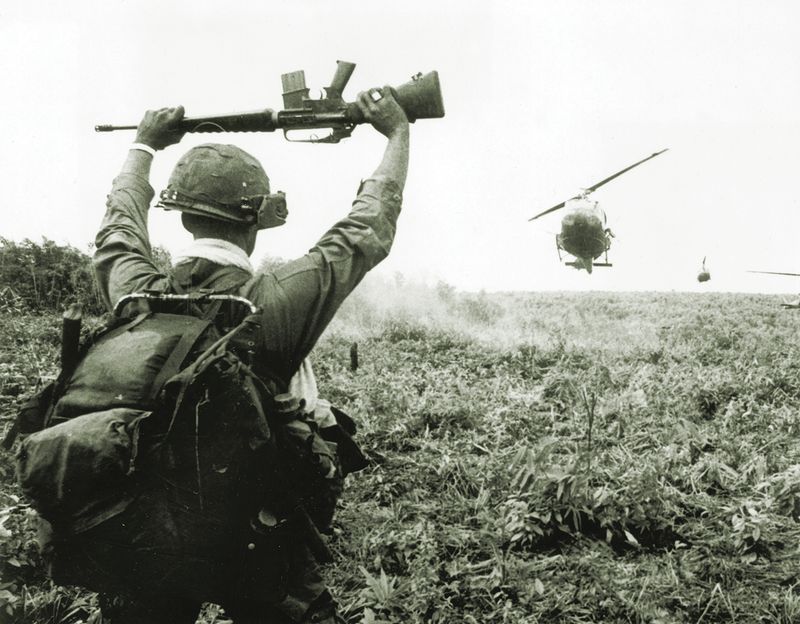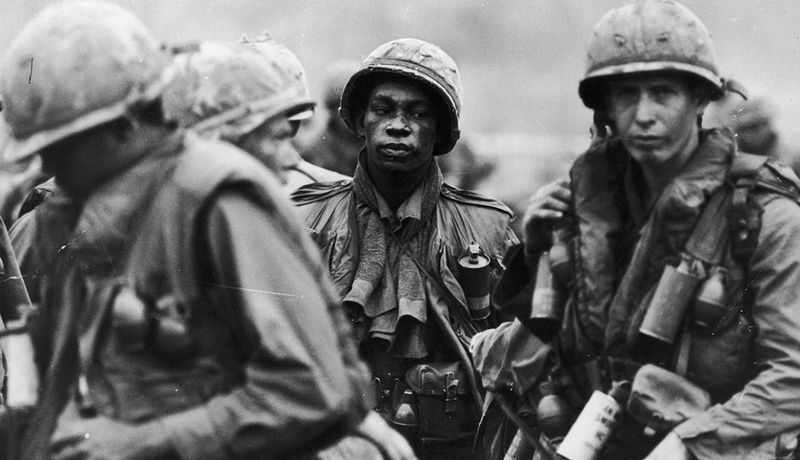The Vietnam War remains one of America’s most misunderstood conflicts. Many beliefs about this tumultuous period have been shaped by movies, political narratives, and simplified history lessons rather than facts. Even today, decades after the last American troops left Southeast Asia, these misconceptions color how we understand both the war itself and its lasting impact on our nation.
1. Most American Soldiers Were Drafted Against Their Will
Contrary to popular belief, approximately two-thirds of Americans who served in Vietnam volunteered for military service. Only about one-third were drafted, challenging the common narrative of an army of reluctant conscripts.
Many young men enlisted out of patriotism, family military traditions, or to choose their branch of service rather than waiting for the draft. Economic opportunities, specialized training, and career advancement also motivated volunteers.
This reality complicates the simplified narrative of universal opposition to service. While the draft remained controversial and inequitable, recognizing the high percentage of volunteers provides a more nuanced understanding of who fought and why.
2. Returning Veterans Were Universally Despised
The image of returning soldiers being universally spat upon and mistreated has been greatly exaggerated. While some veterans did face hostility, particularly in certain urban areas or college campuses, many communities welcomed their soldiers home with parades and support.
Research by historian Jerry Lembcke suggests that widespread stories of spat-upon veterans emerged years after the war ended, not during the conflict itself. Most anti-war protesters directed their anger at government policies and military leadership, not individual servicemembers.
Regional differences played a significant role in how veterans were received, with many rural and conservative communities showing strong support for those who served.
3. The War Was Fought Only Using Conventional Tactics
Hollywood often portrays the Vietnam War as purely conventional battles in jungles, but the reality was far more complex. American forces employed sophisticated counterinsurgency strategies, psychological operations, and village pacification programs alongside traditional combat.
Special operations units like the Green Berets worked extensively with indigenous populations, training local defense forces and gathering intelligence. The Phoenix Program specifically targeted Viet Cong infrastructure through intelligence gathering and targeted operations.
Naval riverine forces patrolled complex waterways while air cavalry units pioneered helicopter assault tactics. This multifaceted approach reflected the military’s adaptation to an unconventional conflict that defied traditional Western warfare doctrine.
4. America Lost Every Major Battle
American forces actually won nearly all major conventional engagements with North Vietnamese troops and Viet Cong guerrillas. The U.S. military’s superior firepower, air support, and training gave them decisive tactical advantages in direct confrontations.
The war’s outcome wasn’t determined by battlefield defeats but by strategic failures and waning political will. South Vietnam ultimately fell two years after American combat troops withdrew, not because U.S. soldiers couldn’t win firefights.
This distinction matters because it highlights how modern wars aren’t simply won through military might alone. Political objectives, civilian support, and strategic patience often determine final outcomes more than combat victories.
5. The Conflict Was Limited to Vietnam’s Borders
The war extended far beyond Vietnam’s borders, encompassing much of Southeast Asia. Massive bombing campaigns in Cambodia and Laos—some kept secret from the American public for years—dropped more explosives than used in all of World War II.
The Ho Chi Minh Trail, North Vietnam’s supply route, wound through neighboring Laos and Cambodia. American and allied forces conducted numerous cross-border operations to disrupt these supply lines and enemy sanctuaries.
Thailand hosted major American air bases from which bombing runs were launched daily. Meanwhile, naval operations extended throughout the Gulf of Tonkin and South China Sea, making this a truly regional conflict that destabilized multiple countries for decades afterward.
6. Viet Cong Were Just Untrained Farmers
Far from being simple peasants with rifles, many Viet Cong fighters were highly disciplined and tactically sophisticated. Their leadership often included experienced veterans who had fought against Japanese and French forces for decades.
The Viet Cong maintained elaborate tunnel complexes, field hospitals, and supply networks that confounded American military planners. Their intelligence gathering was remarkably effective, with sympathizers throughout South Vietnamese society providing crucial information.
Their ability to blend with civilian populations, strike unexpectedly, and then disappear represented classic guerrilla warfare executed with exceptional skill. American soldiers frequently remarked on their adversaries’ determination, resourcefulness, and combat effectiveness despite material disadvantages.
7. Agent Orange Only Affected Enemy Territory
The U.S. military sprayed over 20 million gallons of herbicides like Agent Orange across South Vietnam—America’s ally—not just enemy territories. These chemicals destroyed vegetation to deny cover to enemy forces and clear perimeters around military installations.
American personnel regularly operated in recently sprayed areas, unknowingly exposing themselves to dangerous dioxins. Vietnamese civilians in sprayed regions suffered immediate health effects and generational birth defects that continue today.
The environmental damage was so extensive that large areas of Vietnam remained deforested for decades. This widespread chemical campaign represents one of history’s largest environmental warfare operations, with consequences that transcended combat objectives and affected friend and foe alike.
8. The Tet Offensive Was a Military Victory for North Vietnam
The 1968 Tet Offensive resulted in devastating military losses for the Viet Cong and North Vietnamese forces. Nearly 45,000 communist fighters died compared to about 4,000 American and South Vietnamese troops, effectively destroying the Viet Cong as an effective fighting force.
However, the psychological impact on American public opinion transformed this military defeat into a strategic victory. Television footage of fighting in Saigon and other cities contradicted official claims that the war was progressing well.
Walter Cronkite’s famous editorial questioning the war’s winability following Tet reflected this turning point. The offensive demonstrated that despite years of American involvement, enemy forces could still mount nationwide coordinated attacks, undermining confidence in ultimate victory.
9. The Media Single-Handedly Turned America Against the War
Media influence on public opinion about Vietnam was significant but not deterministic. Polling shows American support for the war had already begun declining before coverage became predominantly negative.
Early reporting actually tended to support official government narratives. Only after credibility gaps emerged between Pentagon statements and ground realities did reporting become more critical.
Personal connections to the war—having family members serving, mounting casualty reports, and economic costs—shaped opinions more powerfully than media coverage alone. The relationship between media and public opinion was complex, with journalists often reflecting existing doubts rather than creating them, functioning as messengers of an increasingly unpopular conflict rather than its architects.
10. Anti-War Protesters Hated American Soldiers
The anti-war movement encompassed diverse groups with varying attitudes toward servicemembers. Many prominent protest organizations explicitly separated opposition to government policy from attitudes toward individual soldiers.
Vietnam Veterans Against the War became one of the most powerful anti-war voices, with thousands of returned servicemembers participating in protests. Their presence complicated the narrative of protesters versus soldiers.
Many activists worked directly with veterans on issues like PTSD treatment, Agent Orange exposure, and benefits. Historical records show that numerous anti-war groups distributed literature specifically expressing support for troops while opposing the policies that sent them to war, reflecting a nuanced position rather than blanket hostility toward those who served.
11. America Could Have Won With More Bombing
The United States dropped more bombs during the Vietnam War than in all of World War II—over 7 million tons. North Vietnam endured bombing campaigns more intense than any country had previously experienced, yet continued fighting.
Operation Rolling Thunder and Operation Linebacker failed to break North Vietnamese resolve or halt infiltration into the South. Rural guerrilla forces proved remarkably resilient against conventional air power, dispersing into jungles and underground tunnels.
North Vietnam’s decentralized agricultural economy and Soviet/Chinese support helped them withstand bombing campaigns. Military historians now widely recognize that strategic bombing had diminishing returns in this conflict, making the “more bombing would win” argument problematic given the already unprecedented scale of air operations conducted.
12. The War Was Simply Democracy Versus Communism
Vietnam’s conflict had roots far deeper than Cold War ideology. Vietnamese nationalism and anti-colonialism motivated many fighters who had resisted foreign domination for generations, first against Chinese rule, then French colonialism, Japanese occupation, and finally American intervention.
South Vietnam’s government under figures like Ngo Dinh Diem was authoritarian rather than democratically representative. Many South Vietnamese supported neither side fully, caught between corrupt government officials and communist revolutionaries.
Religious factors complicated matters further, with Buddhist-Catholic tensions and ethnic minority politics influencing allegiances. The simplified democracy-versus-communism framework failed to capture these complex local dynamics that ultimately proved decisive in determining the conflict’s outcome.
13. The Domino Theory Proved Accurate
The domino theory predicted that if South Vietnam fell to communism, neighboring countries would inevitably follow like toppling dominoes. After Saigon fell in 1975, Laos and Cambodia did become communist, seemingly confirming the theory.
However, other Southeast Asian nations like Thailand, Malaysia, Singapore, Indonesia, and the Philippines successfully resisted communist takeovers. These countries implemented their own anti-communist strategies while developing economically, demonstrating that local conditions mattered more than proximity to communist states.
Vietnam itself later reformed its economy along market lines and now maintains positive relations with the United States. This mixed outcome suggests the domino theory oversimplified complex regional dynamics and underestimated each country’s unique circumstances and agency.
14. American Troops Routinely Committed War Crimes
Atrocities like the My Lai Massacre, where American troops killed hundreds of Vietnamese civilians, did occur and represent genuine war crimes. However, such incidents were exceptions rather than standard practice among the 2.7 million Americans who served in Vietnam.
Most American units operated under rules of engagement designed to minimize civilian casualties, though these rules were sometimes difficult to follow in guerrilla warfare conditions. Many veterans recall actively working to protect Vietnamese civilians and build relationships with local communities.
The moral complexity of counterinsurgency warfare, where enemies didn’t wear uniforms and sometimes used civilians as shields, created genuine ethical dilemmas for troops. Recognizing this nuance doesn’t excuse verified atrocities but provides context for understanding the conflict’s moral dimensions.
15. The War Had No Significant Historical Impact
Far from being a pointless conflict, the Vietnam War fundamentally transformed American society and institutions. The military shifted to an all-volunteer force, ending the draft system that had existed since World War II.
Politically, the War Powers Act limited presidential authority to commit troops without congressional approval. Media became more skeptical of government claims, developing an adversarial relationship with official sources that continues today.
Vietnam veterans’ experiences led to recognition of PTSD as a medical condition and improved veterans’ services. Culturally, the war sparked enduring debates about patriotism, civil disobedience, and America’s global role that still influence our politics. These lasting consequences make Vietnam one of America’s most consequential conflicts despite its controversial outcome.
